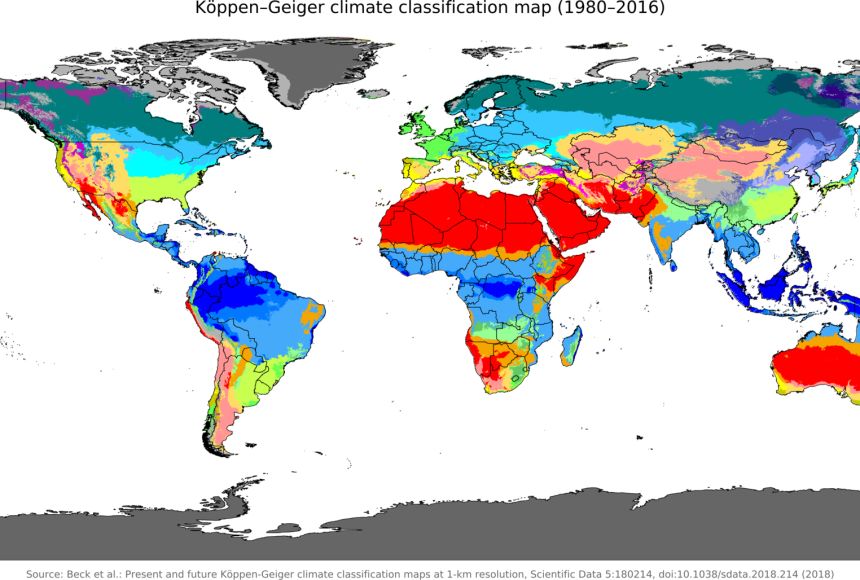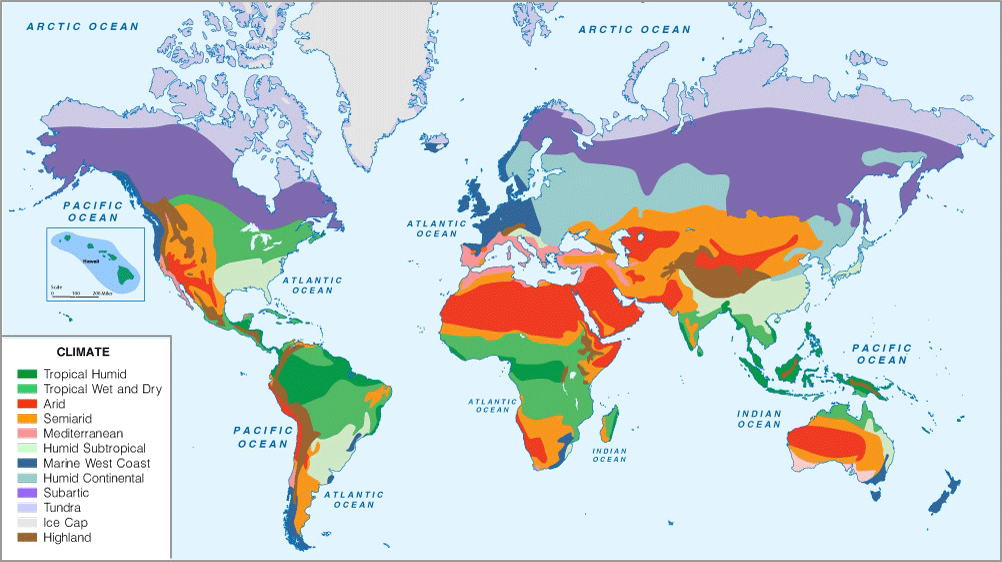Exploring Climate Zones and Their Impact on Plant Growth
In the grand tapestry of horticulture and agriculture, the interplay between climate zones and cultivation takes center stage. As the Earth’s climatic variations shift and evolve, so does the palette of plant life that can thrive in different regions.

This article delves into the intricate realm of climate zones and how they intricately shape the art of plant growth.
Understanding Climate Zones
Defining Climate Zones: Climate zones are distinct geographical areas categorized based on shared climatic conditions. These zones provide a framework for understanding the types of weather patterns, temperature ranges, and growing conditions that prevail in different parts of the world. From the scorching deserts of arid zones to the lush rainforests of tropical zones, climate zones serve as nature’s blueprint for vegetation distribution.
Factors Influencing Climate Zone Classification: The classification of climate zones is influenced by a multitude of factors, including latitude, altitude, proximity to oceans, and prevailing wind patterns. These factors collectively determine the temperature and moisture patterns that define each zone. For instance, coastal areas often experience milder temperatures due to the moderating effect of the nearby ocean, while inland regions may exhibit more extreme temperature fluctuations.
Temperature Zones and Plant Adaptation
Tropical Zones
Where Lush Green Thrives: Tropical zones near the equator boast consistent warmth throughout the year. The temperature rarely dips to uncomfortable lows, allowing a diverse array of flora to flourish. Think of the vibrant rainforests with their towering trees and exuberance of plant life, all in harmonious sync with the tropical climate. From the iconic palm trees to the intricate tapestry of ferns and orchids, tropical zones host a breathtaking variety of plant species.
Temperate Zones
Seasons of Change: Temperate zones experience the full spectrum of seasons, from warm summers to cold winters. These zones are home to deciduous trees that shed their leaves in fall and sprout anew in spring. The plants here have adapted to the ebb and flow of temperature changes, showcasing the stunning display of seasonal shifts. Orchards laden with apples, fields of wheat dancing in the breeze, and forests ablaze with autumn colors paint a vivid picture of the captivating beauty found within temperate zones.
Polar Zones
Chilling Challenges and Adaptations: At the polar extremes, frigid temperatures and minimal sunlight pose challenges for plant life. Yet, some hardy species have evolved remarkable strategies to survive these harsh conditions. From mosses that cling to rocks to cushion plants that thrive in the tundra’s short growing season, polar zones hold tales of resilience against all odds. These plant communities have mastered the art of survival, embracing the stark beauty of ice and snow.
Plant Growth and Climate Harmony
Finding the Sweet Spot for Each Plant: Successful plant growth hinges on finding the climate sweet spot for each species. A delicate balance of temperature, sunlight, water, and soil composition is required to unlock a plant’s full potential. Whether it’s the cacti of arid zones conserving water or the rice paddies of subtropical zones thriving in flooded fields, every plant species has found its niche within the climatic embrace.

The Art of Microclimates and Plant Diversity: Within a larger climate zone, microclimates create localized variations. These pockets of unique conditions offer opportunities for growing plants that might not be well-suited to the broader zone. Microclimates can be created intentionally through techniques like planting against a south-facing wall, utilizing mulch, or even using reflective surfaces to direct sunlight. This intricate dance of sunlight and shade adds layers of complexity to the gardening canvas.
Navigating Plant Hardiness Zones
Demystifying Plant Hardiness Zones: Plant hardiness zones offer insight into the plants that are likely to thrive in a specific region. These zones take into account average minimum temperatures and help gardeners and farmers make informed decisions about what to grow. They act as a guiding compass, steering enthusiasts away from potential planting pitfalls.
Selecting the Right Plants for Your Climate Zone: Choosing plants that are compatible with your hardiness zone is essential for successful cultivation. Planting species that are not well-suited to your zone could lead to disappointment and frustration, as these plants may struggle or fail to thrive in your climate’s conditions. Research and understanding of your zone ensures a harmonious relationship between your garden and the environment.

Climate Change and Zone Shifts
The Dynamics of Changing Climate Zones: As the planet’s climate changes, climate zones are shifting. Warmer temperatures are altering the boundaries of certain zones, affecting both natural ecosystems and agricultural practices. What was once a familiar planting routine might now require adjustments as new temperature patterns emerge.
Adapting Agriculture and Gardening to New Realities: Gardeners, farmers, and scientists are challenged to adapt to these changing climate dynamics. This might involve shifting planting schedules, experimenting with new plant varieties, or even creating innovative growing techniques to navigate the evolving climate landscape. The agility to embrace change becomes a cornerstone of successful cultivation in an ever-changing world.

Tools for Climate Zone Identification
Utilizing Climate Zones Maps and Resources: Numerous resources, including online maps and guides, provide valuable information about climate zones. These tools help individuals understand their specific zone and its unique growing conditions. Digital maps are dynamic companions, offering real-time insights into climate data.
Embracing Technology for Climate Zone Accuracy: In the digital age, technology plays a vital role in accurately identifying climate zones. Weather data, satellite imagery, and predictive models contribute to refining the boundaries of climate zones, offering more precise information for gardening and agriculture. Smart algorithms translate complex data into user-friendly insights.
Climate Zones
The dance between climate zones and plant growth is a symphony of adaptation, resilience, and human ingenuity. From lush tropical jungles to temperate fields of crops, each climate zone shapes the canvas upon which life unfolds. Understanding these zones and their impact on cultivation allows us to co-create with nature, fostering a world where green dreams thrive within the parameters of climate reality.
| Climate Zone | Characteristics | Notable Plant Life |
|---|---|---|
| Tropical Zone | Warm temperatures, high humidity, abundant rainfall | Rainforests, diverse plant and animal life |
| Temperate Zone | Distinct seasons, moderate temperatures, varying precipitation | Deciduous trees, grasslands, forests |
| Polar Zone | Extremely cold temperatures, limited sunlight | Cold-adapted plant species, permafrost |
| Arid or Desert Zone | Low rainfall, arid conditions | Cacti, succulents, drought-resistant plants |
| Mediterranean Zone | Mild, wet winters; hot, dry summers | Olive trees, grapevines, drought-tolerant plants |
| Subarctic Zone | Cold temperatures, coniferous forests | Spruce, pine, fir trees |
| Mountain Zone | Cooler temperatures with increasing elevation | Varied plant life based on elevation |
This table provides a concise overview of the characteristics of each climate zone and the notable types of plant life that are typically found in each zone.
As we explore the intricate relationship between climate and cultivation, we find ourselves not just as gardeners, but as stewards of the Earth’s ever-evolving landscape.






